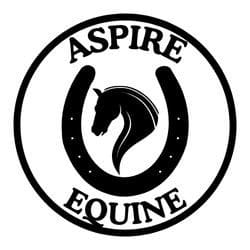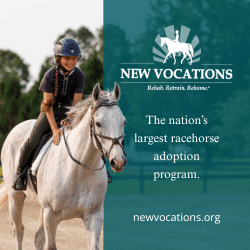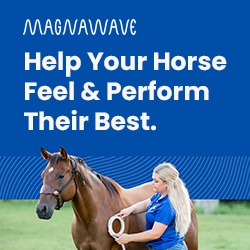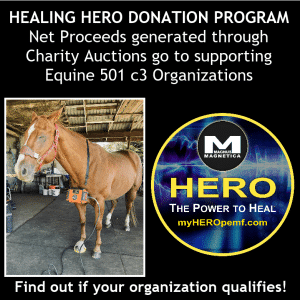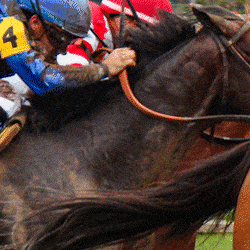How to successfully transition broodmares to riding careers
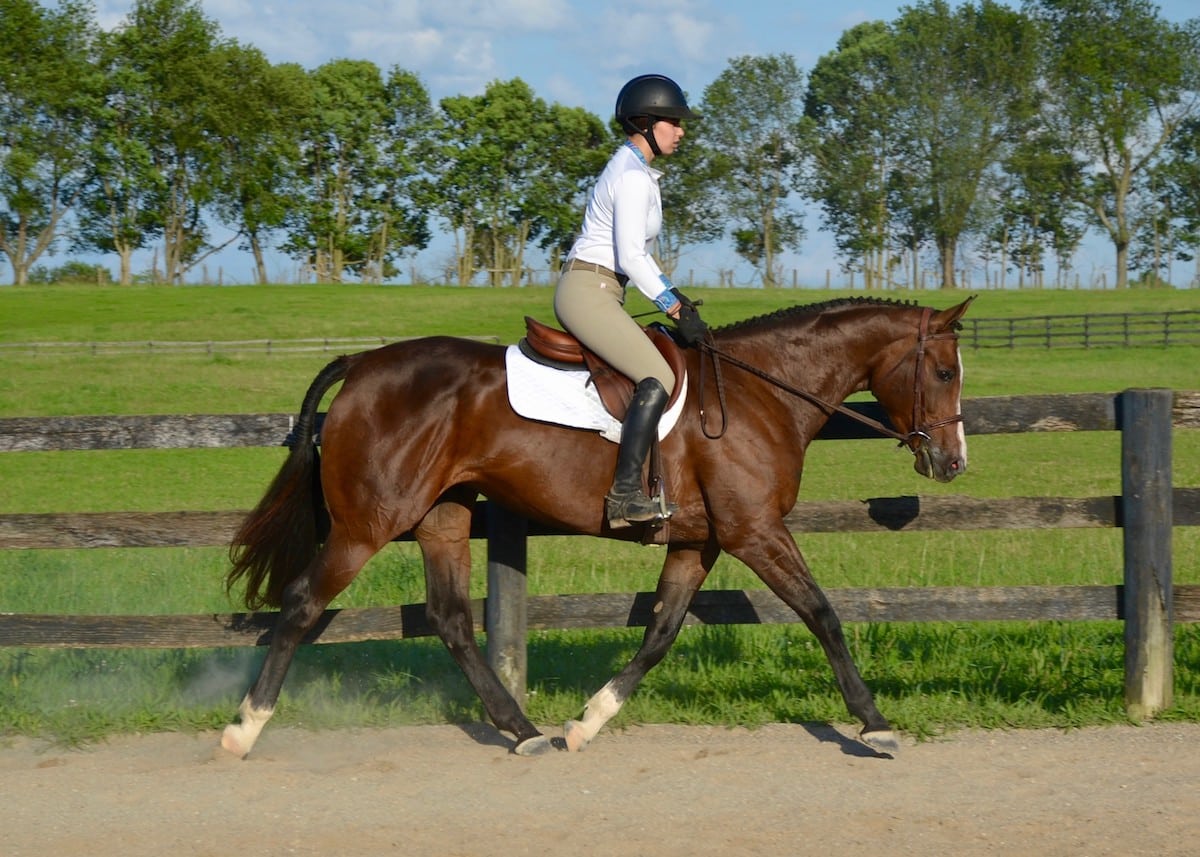
Taylor Wienold and Brooke Schafer restarted Kakadu (pictured), the dam of American Pharoah’s first foal, as a riding horse. Courtesy T&B Sporthorses
Move over, second careers. Third careers are becoming more popular for a certain — and very special — group of Thoroughbreds: broodmares. Rearing the next generation of racing superstars is a critical task, but every mare’s foal-bearing years come to an end for reasons ranging from reproductive issues to lackluster foal prices.
While some retired broodmares are best suited to a life of leisure due to age or health issues, others are sound and ready for a new job.
We asked two trainers experienced in restarting broodmares for their tips on how to ensure a successful transition back to a riding career. Lori Miller, the head trainer at Friends of Ferdinand Inc. (FFI), who is based in Germantown, Ohio, has reintroduced many equine moms to riding careers as part of FFI’s Broodmare Bunch program. Taylor Wienold, who is based in Lexington, Kentucky, along with fellow trainer Brooke Schafer (now in Louisiana), restarted and later sold Kakadu (Tizway — Alpha Spirit, A.P. Indy), the dam of American Pharoah’s first foal, as a riding horse.
While the “grumpy old broodmare” stereotype lives on, it’s just that — a stereotype. In fact, Miller says, most mares she’s worked with have taken their return to ridden work right in stride.
“They tend to be pretty tolerant,” she says, after intensive management during gestation and raising foals. “When we do our evaluations of them, temperament is key. Our average adopter is a middle-aged re-rider, so having a kind horse is very important. A lot of the broodmares we get can fulfill that requirement.”
Another perk? Miller says most of them are incredibly easy to manage on the ground.
“Sometimes when we get horses straight off the track, it feels like they want to eat you for lunch,” she says with a laugh. “The broodmares are used to being handled all the time and are so kind.”
Go Back to Basics and Take Your Time
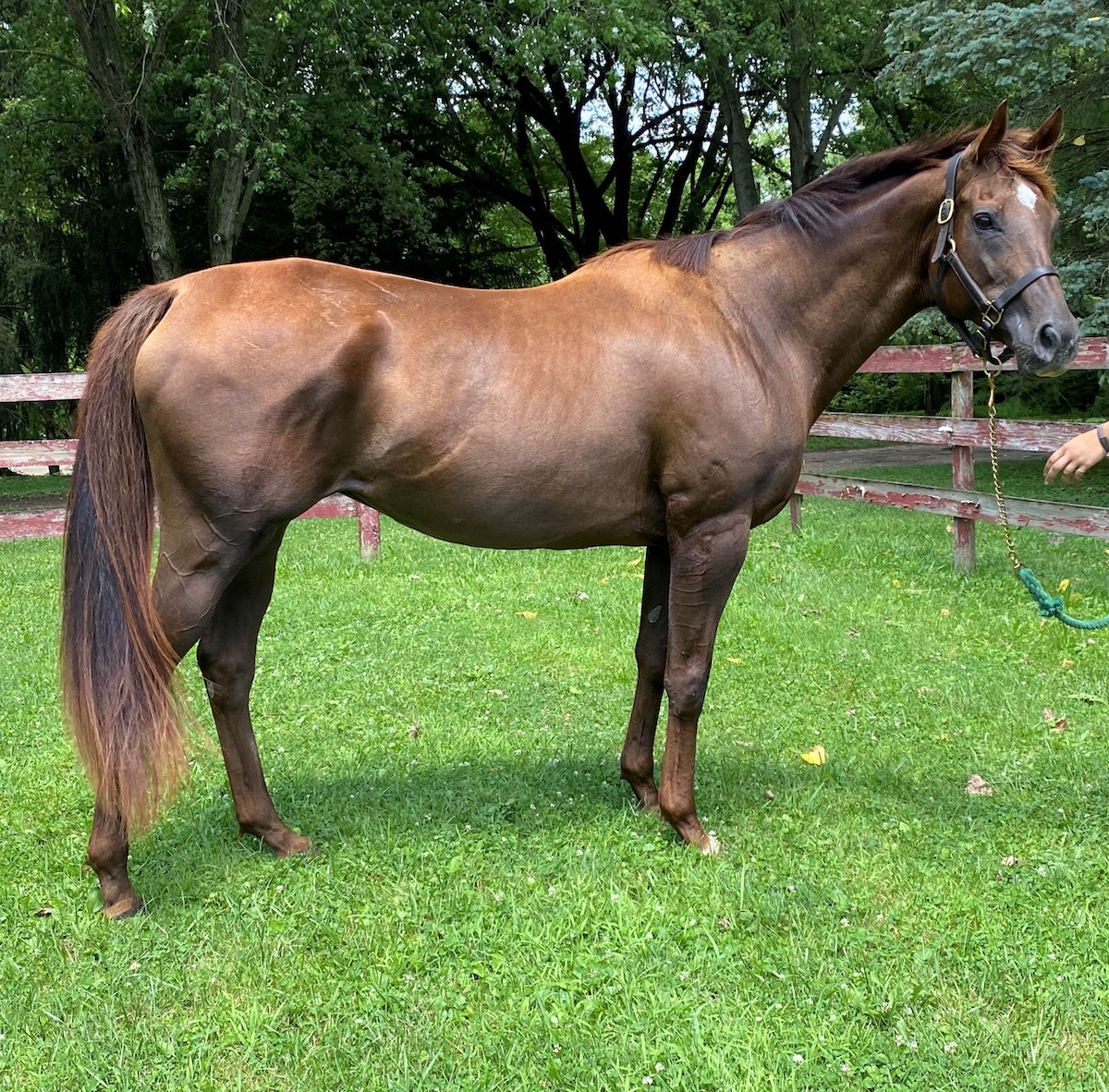
Broodmares that haven’t been ridden in years need a slow and steady conditioning program to build up their fitness and muscles, particularly of the topline, core and hind end. Courtesy Lori Miller
In many ways restarting a broodmare doesn’t differ significantly from restarting a horse off the track or bringing a horse back into work after extended time off. It takes time and patience.
Miller and Wienold agree that going back to basics, even if a mare was ridden in the past, is an important part of giving her a good restart.
“Depending on how long they have been off the track, there is no guarantee as to what they may remember,” Wienold says. “I typically start all my horses from the ground to get a feel for their brain and willingness to work.”
She says long-lining, longeing with and without tack and other in-hand work can help ease a mare back into training and reveal how quickly she can progress.
“I don’t put a timeline as to when I have to sit on their backs,” Wienold adds.
Miller agrees. “The most important things are not having an agenda and letting the horse take the time she needs.”
And if things start to go awry, pause and return to the basics.
“It’s so important to be sure it’s a positive experience for both horse and rider,” Wienold says. “Take everything one day at a time, and allow them to settle into their new career.”
Don’t Overlook Physical Issues
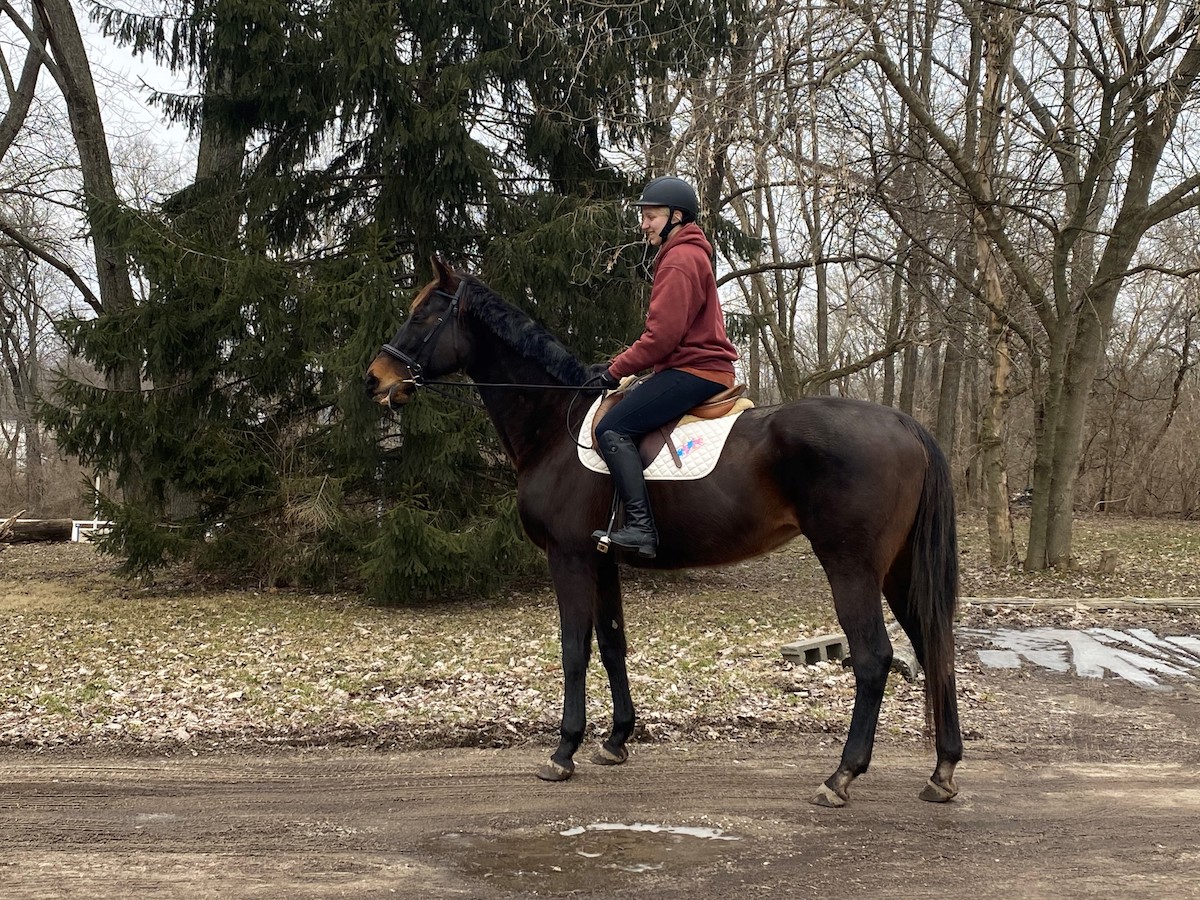
Mongoose Gold (Mongoose — A Golden Rose, Strike the Gold) is one of the former broodmares available for adoption through Friends of Ferdinand’s Broodmare Bunch program. Courtesy Lori Miller
Like you would with any former racehorse, it’s important to try to find out as much information about a broodmare’s history as possible, Wienold says.
Undoubtedly, some entered the breeding shed sound with no major or known injuries following their racing careers; others with desirable pedigrees might not have even made a start if they didn’t show enough promise in early training. Other mares might have sustained injuries on the track or in a second career that forced their retirement to the broodmare band, Wienold adds.
“It’s always a good idea to ask as many questions as possible to determine the level of riding any horse may be suitable for,” she says.
If a mare comes with little or no history, proceed as you would with any other new horse: Have a veterinarian perform a prepurchase and examine her for injuries or other issues. Watch closely for signs of discomfort during grooming, tacking, riding and even in the barn or pasture. Ask your veterinarian if the mare needs a Caslick’s procedure to suture the upper portion of her vulva closed. Mares that have had multiple foals often have compromised vulvar conformation that causes air to aspirate into the vagina when they move.
If you’re considering breeding the mare in the future and she wasn’t retired from broodmare duty due to a physical issue (if her owners are downsizing their herd, for instance), also have your veterinarian perform a reproductive exam to ensure all systems are go for future foals.
Additionally, remember that unlike many off-track horses, most broodmares haven’t been exercised in years. This means they’ll need a slow and steady conditioning process to build up their fitness and muscles, particularly of the topline, core and hind end.
Start with easy walking before gradually adding a few minutes of trot and, subsequently, canter. If you’re planning to jump, ensure your mare is well-conditioned on the flat before asking her to tackle fences. Incorporating a variety of exercises — from performing carrot stretches and using resistance bands to strengthen the core to working over poles and riding up and down hills — into the conditioning process can help build whole-body fitness and strength as a mare’s body readjusts to riding.
As always, pay close attention to how the mare responds: “They may come out willing to work for a week and may show up body-sore the next while adjusting to their new life,” Wienold says.
Finally, consider whether the mare has had problems conceiving, carrying, birthing or raising a foal that could affect her later in life. Some potentially painful reproductive tract issues that can impair fertility — an ovarian tumor, for example — can manifest as behavioral issues. Or, it could be tempting for a future owner to breed a mare with good bloodlines, which might be ill-advised if she experienced issues ranging from foal rejection to repeated dystocias (difficult births).
The good news? Miller says she hasn’t seen foaling-related problems cause issues with mares transitioning to riding careers.
Take-Home Message
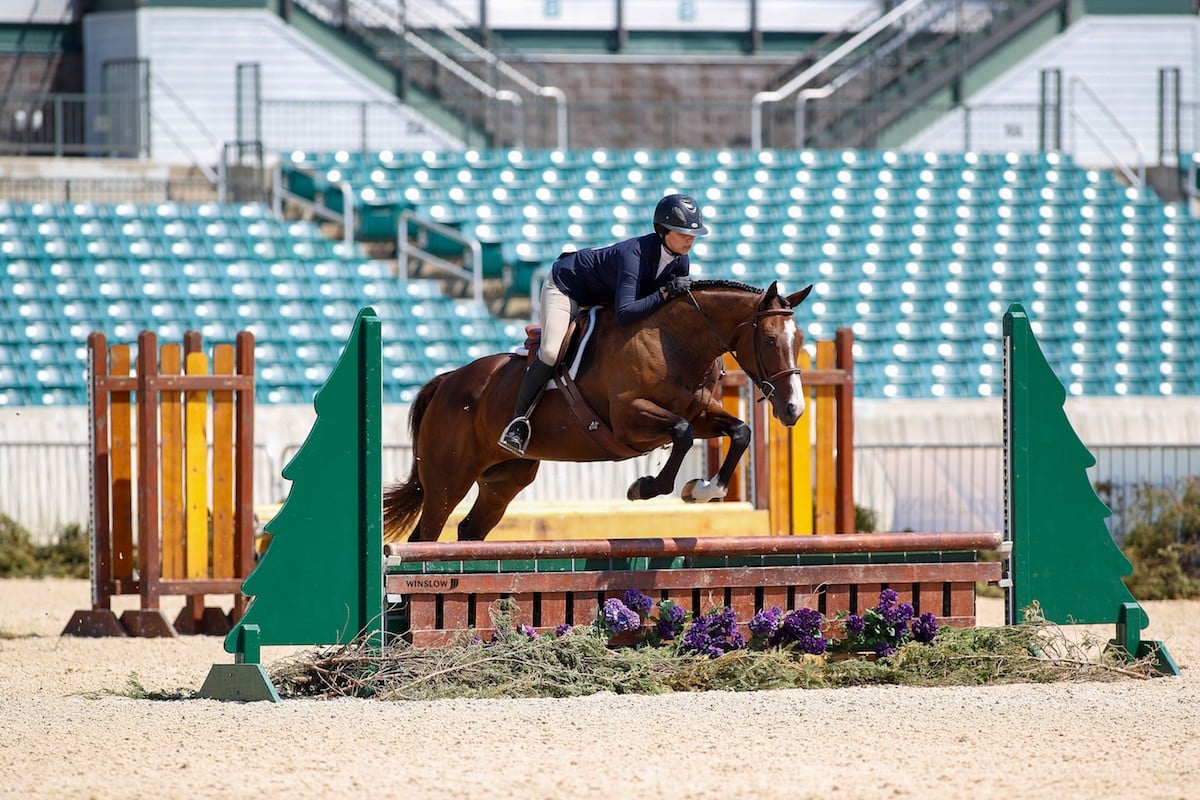
Some mares, like 9-year-old Kakadu, get retired from breeding young, leaving them plenty of years to have fruitful riding careers. Courtesy Winslow Photography
Broodmares can be exceptional mounts in a number of arenas. The even-tempered middle-aged mare might enjoy taking pleasure rides with weekend warriors. Young, well-bred mares with fertility issues might excel in sporting careers with competitive riders.
“I think it’s a great opportunity to get some really, really nice horses,” says Miller. “Some of the broodmares get retired pretty young, and you can get a hold of some fantastic bloodlines — maybe that famous American Pharoah that didn’t work out on the track. That’s pretty neat.”
Wienold adds that there’s something special about giving a mare a third purpose in life.
“So many are extremely sound and able to have a career outside of breeding,” she says. “The broodmare Brooke and I restarted, Kakadu, had such a cool story and turned into one of my absolute favorite horses to ride. She was so kind, willing and smart. We could just tell she was happy to have a job again.
“Remember to just take everything day by day,” she adds. “Listen to them and their needs, and there is no reason they can’t make phenomenal sport horses.”
Wasn’t I Retired?!
Being a mom is a full-time job that for many broodmares does not involve work under saddle. And while most broodmares ease back into riding happily, transitioning to life as a “working woman” can be an unwelcome change for others.
If a mare is particularly stubborn and protests returning to work, don’t panic and don’t give up. Have your veterinarian examine her to rule out physical issues — from general body or back soreness from working after a long break to past injuries from her racing days — that could be contributing to her aversion to work. If the vet finds an issue, work with him or her to address it before the mare continues training. If she’s sound and healthy, go back to basics and be patient.
“I usually … start at the beginning — groundwork, longeing, even introducing the saddle — and just try to fill in any holes that might be there,” says Lori Miller, who trains Friends of Ferdinand Inc.’s Broodmare Bunch, in Germantown, Ohio.
Keep the mare interested, don’t rush her too quickly and don’t be afraid to think outside the box.
“Don’t be married to one strategy,” she says. “Be willing to change things if you’re feeling like, ‘You know, I don’t think this is working that well.’”
If you’re still stuck, don’t be afraid to ask for help or enlist a professional trainer. Sometimes it just takes a different perspective to get a mare back on track.
Most mares enjoy having a job in life if you introduce it slowly and thoughtfully.
This article was originally published in the Spring 2022 issue of Off-Track Thoroughbred Magazine, the only publication dedicated to the Thoroughbred ex-racehorse in second careers. Want four information-packed issues a year delivered to your door or your favorite digital device? Subscribe now!

